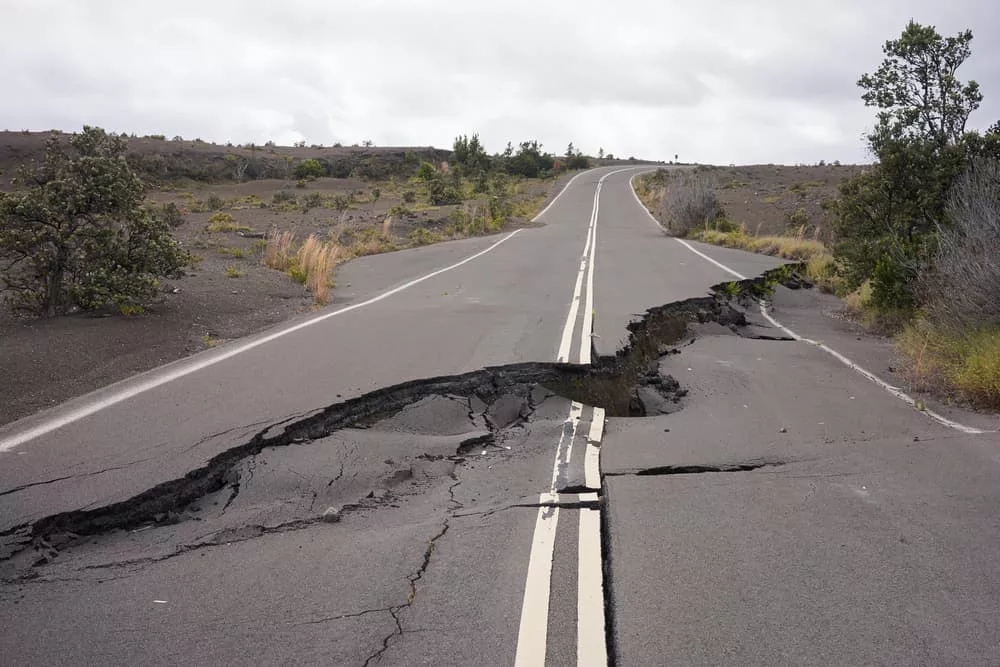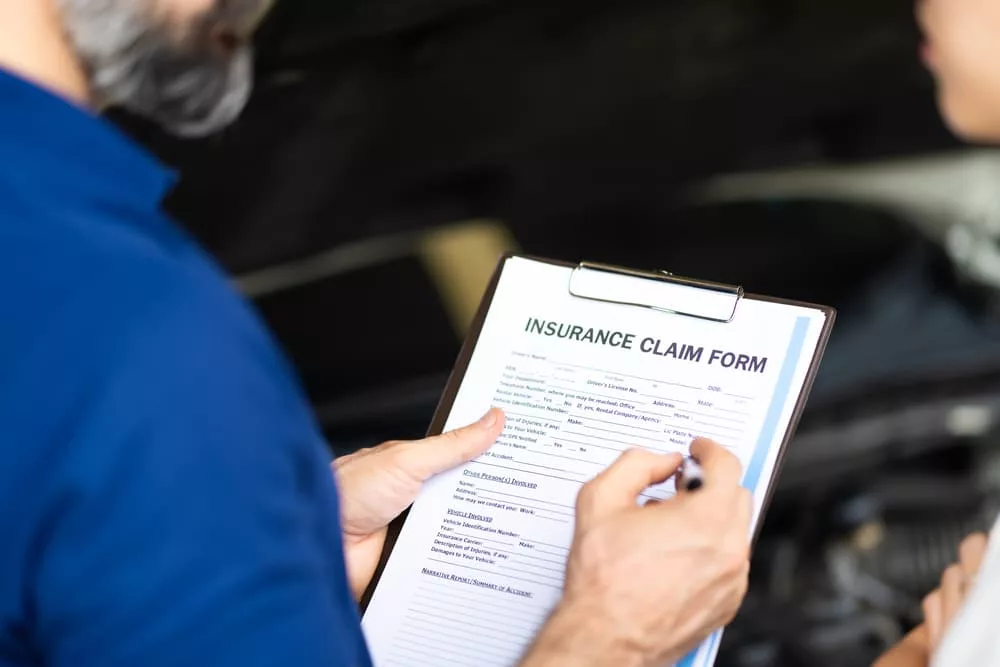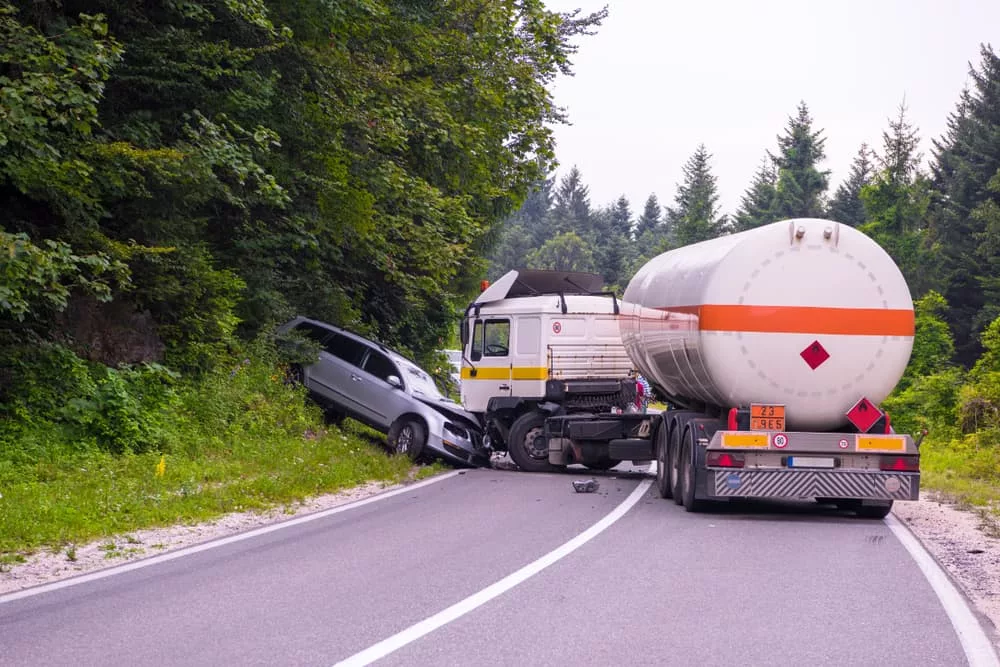Rear end car accidents are among the most common types of traffic collisions that occur on U.S. roads. But although thousands of them happen across the country every day, a rear end crash hardly feels like an everyday event when it happens to you. Even rear end accidents that occur at relatively low speeds can leave victims with severe physical injuries, debilitating income losses, and other life-changing issues. However, if someone else caused the accident, you could potentially file an injury claim to demand accountability and fair compensation from the at-fault party.
Many people assume that the driver in the rear vehicle is automatically at fault for a collision, but the truth is more complicated. Read on to learn more about rear end accidents, how they occur, and who can hold at fault when one happens to you.
Rear End Accident Facts and Statistics
A rear end accident happens when the front of one vehicle crashes into the rear end of another vehicle ahead of it. Rear end accidents are statistically the most common type of accident involving two or more vehicles. If a rear end crash occurs in dense traffic, it can cause a chain reaction that affects multiple other vehicles.
Let’s explore some recent facts and statistics that illustrate the frequency and severity of rear end car accidents:
- Rear end accidents increase the risk of flexion and extension injuries in the neck and fractures of the spine.
- Drivers who use high-speed lanes are more likely to drive closer to one another and have higher chances of being in rear end collisions.
- Younger drivers, higher-income drivers, and drivers who are prone to aggression are also more likely to cause rear end accidents.
- In just one year, 1,457,155 rear end car accidents in the United States constituted 27.8 percent of all traffic accidents.
- As a result of all rear end collisions that year, there were 1,037,665 property damage crashes, 417,062 reported injury crashes, and 2,428 fatal crashes.
- There were 1,014,408 passenger cars, 934,782 light trucks, 94,214 large trucks, 6,167 buses, and 7,376 motorcycles involved in rear end accidents that year.
- Rear end accidents in one year killed 1,633 people, and seriously injured another 483,675.
Potentially Liable Parties in a Rear End Accident
Determining the liable party and who caused the accident are important aspects of many auto accident claims. Most U.S. states follow fault-based auto insurance systems, meaning crash victims in these states have the right to recover compensation from at-fault parties. And even in no-fault insurance states, crash victims can sometimes seek compensation from liable third parties if they prove certain elements.
When you hold someone liable in a car accident claim, it means they are financially responsible for any harm they caused you. If more than one other driver is at fault, each driver may be responsible for a portion of your losses.
In many rear end car accident cases, the driver of the rear or the following vehicle is at fault. State traffic laws require drivers to follow other vehicles at safe distances and maintain control of their vehicles at all times. So, theoretically, even if a front or leading driver slams on their brakes, a following driver should always have enough time and distance to slow down before rear ending the other vehicle. However, following drivers are not necessarily responsible for all rear end crashes.
Depending on the circumstances, you could hold any of these other parties at fault for a rear end car accident:
When Is the Leading Driver at Fault for a Rear End Accident?
Here are some example scenarios in which a leading driver could be at fault for a rear end accident:
- The leading driver turns or merges into a neighboring lane without signaling.
- The leading driver changes lanes without ensuring enough frontward room for oncoming vehicles to the rear.
- The leading driver suddenly slams on their brakes without warning.
- The leading driver suddenly puts their car in reverse and starts backing up.
- The leading driver stops suddenly in a no-stopping zone.
- The leading driver makes a sudden lane change and cuts off other vehicles.
- The leading driver goes significantly slower than the flow of traffic or drives slower than the minimum posted speed limits.
- The leading driver fails to maintain their vehicle in a safe condition, and a mechanical defect causes their vehicle to stop or slow suddenly.
- The leading driver is driving with broken brake lights.
- The leading driver has a flat and fails to pull over or engage their hazard lights.
- The leading driver “brake checks” another driver by intentionally and suddenly braking in retaliation for perceived tailgating or aggression.
- The leading driver intentionally tries to cause an accident for fraudulent reasons.
- The leading driver is under the influence of drugs or alcohol.
When Is the Following Driver at Fault for a Rear End Accident?
You could hold the following driver at fault for colliding with the leading vehicle in a rear end accident because of:
- Distracted driving. Following drivers who focus on texts, phone calls, or other distractions are far less likely to notice when other motorists slow down or stop, increasing their chances of causing rear end accidents.
- Impaired driving. Following drivers who are under the influence of alcohol or drugs suffer from impaired depth perception, reaction time, and safe judgment, all of which are essential for avoiding rear end accidents.
- Drowsy driving. If a following driver gets behind the wheel without enough rest, their fatigue can dangerously impair their driving abilities and make rear end accidents more likely to occur.
- Speeding. When a following driver exceeds posted speed limits or drives too fast for present road conditions, they have little room for error and are more likely to rear end other motorists as a result.
- Reckless driving. Reckless following drivers who intentionally tailgate, speed, or cut others off in traffic are significantly more likely to cause rear end accidents.
- Aggressive driving. When following drivers behave aggressively, such as by following too closely or attempting to run other drivers off the road, they increase the risk of rear end accidents.
- Driver error. If a following driver is uncertain or has limited experience, they are more likely to commit certain driving errors that increase the risk of rear end accidents, such as failing to yield or forgetting to signal a turn.
- Poor maintenance. If a following driver fails to keep their vehicle in safe working order, they could lose control of the vehicle due to mechanical failures and rear end other motorists.
Injuries From Rear End Car Accidents
Many people think of most rear end accidents as minor fender benders, but even comparatively low-speed rear end crashes often have severe consequences. One common type of injury in many rear end accidents is whiplash, a painful soft tissue injury that affects the neck, shoulders, and upper back.
Whiplash occurs in rear end car accidents when the sudden acceleration and deceleration of the vehicle flings the head back and forth. The rapid movement of the head in this way can damage the soft tissues in the neck, including muscles, tendons, and ligaments. When these soft tissues sustain sprains, strains, bruises, or tears in a rear end crash, doctors call the resulting pain and limited mobility whiplash.
A rear end accident can cause many other types of injuries, too, such as:
- Head and neck injuries
- Face and teeth injuries
- Permanent scarring or disfigurement
- Traumatic brain injuries (TBIs)
- Back and shoulder injuries
- Spinal cord injuries (SCIs)
- Dislocated or broken bones
- Seatbelt and airbag injuries
- Abdominal and internal injuries
- Arm, elbow, wrist, and hand injuries
- Traumatic amputations or loss of limb
- Bruises, lacerations, and puncture wounds
- Soft tissue strains, sprains, and tears
- Leg, knee, ankle, and foot injuries
- “Road rash” and other burn injuries
- Emotional and psychological injuries
- Fatal injuries and wrongful death
Proving Your Rear End Accident Injury Claim
Even if you believe the other driver’s fault is obvious, you will still need to prove your rear end accident claim to get compensation for your losses.
That means working with a knowledgeable lawyer who can identify and present evidence like:
- Police reports. If police responded to the accident scene, they should have completed a thorough report of the crash. Police accident reports often contain valuable information, such as the parties who were in the crash, any citations the police issued, and who the police think was at fault.
- Photos and video footage. Photos of the accident scene and footage from dash cams or surveillance cameras can show exactly what happened in the moments leading up to the crash and the physical consequences afterward.
- Physical evidence. Physical evidence, such as vehicle wreckage, broken car parts, or damaged property, can also establish the causes of the accident.
- Cell phone records. If you suspect the other driver was on their phone when the accident occurred, their cell phone records could confirm your suspicions.
- Car maintenance records. If a mechanical defect or failure contributes to the accident, the other driver’s maintenance records might indicate that they failed to keep their vehicle in safe driving condition.
- Eyewitness statements. If any witnesses saw the accident occur, their statements can provide powerful confirmation to settle disputes.
- Expert witness testimony. In some cases, your attorney might work with physicians, accident reconstruction specialists, or other experts to learn more about the possible causes and consequences of the accident.
Steps to Take After a Rear End Accident
If you’re not sure where to turn after a rear end car accident, you can lay a strong foundation for your personal injury case if you:
- Get medical attention as soon as possible and follow your doctor’s care plan.
- Start a pain journal to document your recovery progress in your own words.
- Gather evidence of the accident, such as photos and witness statements.
- Avoid apologizing or admitting fault when speaking to the other driver.
- Keep copies of medical bills and documents that can prove your income losses.
- Watch what you say to the insurance companies when reporting the accident.
- Refrain from posting photos or updates online until you resolve your claim.
- Contact a rear end accident lawyer before discussing your case with anyone else or accepting any settlement offers from insurance companies.
How a Lawyer Can Help After a Rear End Accident

Filing a rear end accident claim might seem daunting, but there’s no reason to do it alone.
A car accident lawyer can help you by:
- Evaluating your situation and determining whether you have an accident claim
- Identifying all possible sources of compensation for your crash-related losses
- Conducting an independent investigation into the rear end car accident
- Gathering useful evidence and determining who is liable for the accident
- Communicating with employers, insurers, and other parties on your behalf
- Accessing medical records, crash reports, and other hard-to-obtain documents
- Managing important case paperwork, details, and deadlines on your behalf
- Filing your claim and negotiating aggressively with the insurance companies
- Taking your case to court and representing you at trial if the other side won’t pay
Related articles
Related articles Related articles Related articles Related articles Related articles Related articles Related articles Related articles Related articles Related articles
Car Accident
18 Jan 2024
Who Is Liable if a Road Hazard Causes a Car Accident?

Car Accident
16 Jan 2024
How to File a Car Accident Claim as a Passenger





